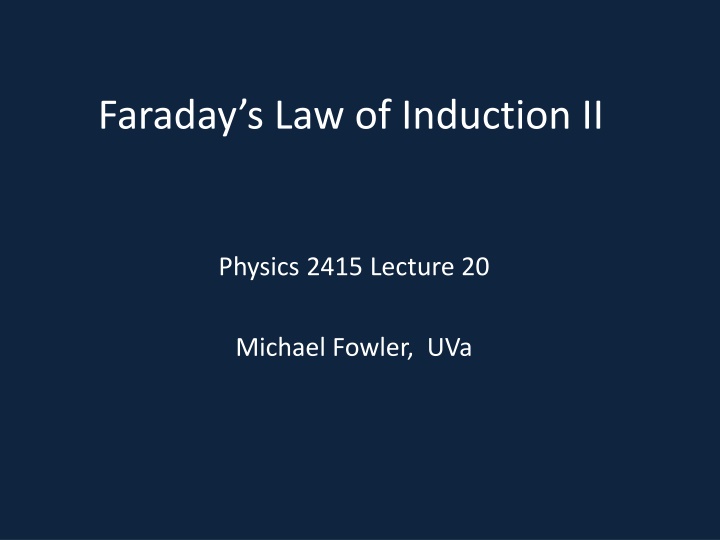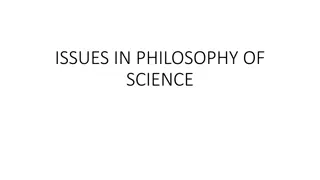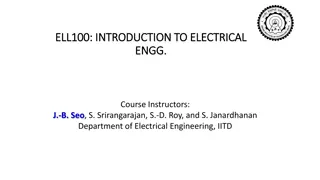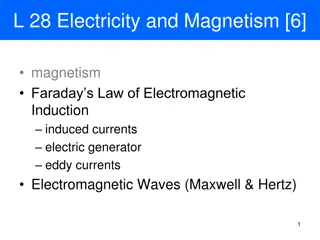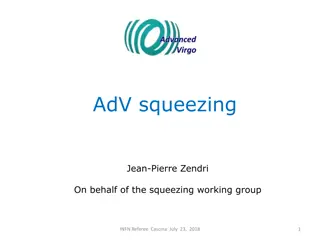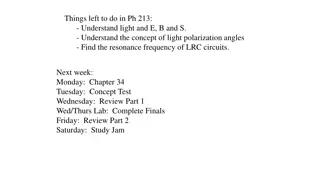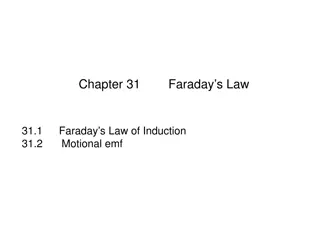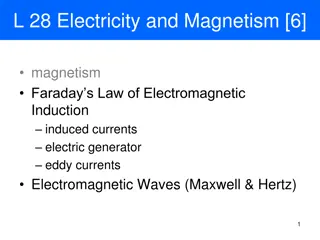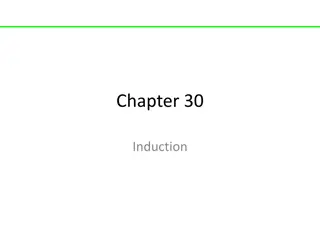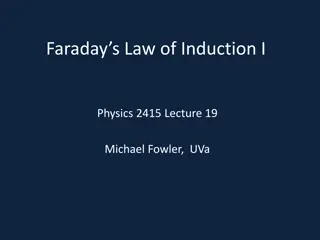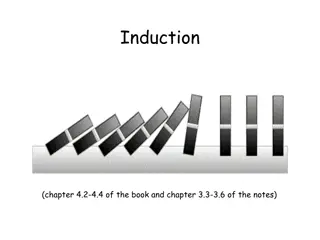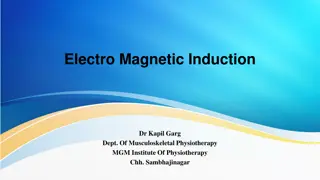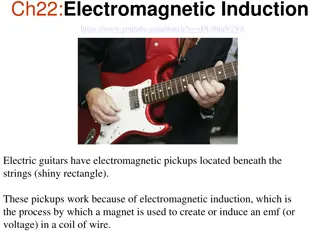Faraday’s Law of Induction II
Faraday's Law of Induction, magnetic flux through a loop, Lenz's Law, electric generators, and more concepts explained with images and examples in Physics lecture.
Uploaded on Mar 07, 2025 | 1 Views
Download Presentation

Please find below an Image/Link to download the presentation.
The content on the website is provided AS IS for your information and personal use only. It may not be sold, licensed, or shared on other websites without obtaining consent from the author.If you encounter any issues during the download, it is possible that the publisher has removed the file from their server.
You are allowed to download the files provided on this website for personal or commercial use, subject to the condition that they are used lawfully. All files are the property of their respective owners.
The content on the website is provided AS IS for your information and personal use only. It may not be sold, licensed, or shared on other websites without obtaining consent from the author.
E N D
Presentation Transcript
Faradays Law of Induction II Physics 2415 Lecture 20 Michael Fowler, UVa
Todays Topics Faraday s Law of Induction Electric Generators Eddy Currents Electric Motors Transformers
Magnetic Flux through a Loop Recall Gauss theorem related flux of electric field through an area enclosing a volume to the charge inside. Faraday introduced the concept of magnetic flux through a loop: the loop is roofed with a surface having the loop as boundary, the magnetic flux through the loop is . dA B = B dA B The integral is over the surface, adding contributions from tiny squares.
Faradays Law of Induction Faraday s law of induction states that when the magnetic flux through a loop is changing, there is an induced emf in the loop given by: . I N Magnet moving up d = E B dt S You get the sign of the emf from Lenz s law
Lenzs Law The direction of the induced emf generated by a changing magnetic flux is always such as to oppose the motion. Example: as the N pole moves up towards the loop, the current induced generates an N pole underneath to repel and slow down the approaching magnet. . I N Magnet moving up S
Lenzs Law Continued The direction of the induced emf generated by a changing magnetic flux is always such as to oppose the change in flux through the loop. Example: as the solenoid switches on, creating upward magnetic flux through the loop, the current generated in the loop will add downward flux. . I Solenoid just switching on
More on Lenzs Law Example: as the solenoid switches on, creating upward magnetic flux through the loop, the current generated in the loop will add downward flux. This means there is considerable transient force on the loop! . I Solenoid just switching on
Electric Generators The basic idea is to do work moving a conductor through a magnetic field, producing an emf, then provide a circuit so the emf can generate a current and therefore electrical energy. . Copy of the first electric generator, constructed by Michael Faraday in 1831. A is the magnet; B, B the terminals.
Electric Generators The essential mechanism is a loop, or in practice a coil of many loops, rotating in a magnetic field, such as between the poles of a horseshoe magnet. If the current is collected via slip rings (no commutator) it will be ac, for one loop: d dBA dt dt t is the angle between and coil area vector . = = = cos sin t BA t E B Loop has area A, rotates in field B at radians/sec. A B
Back to Faradays Generator If the disc is spinning anticlockwise, points inwards, so while the disc is rotating, an electric current is generated under and near the magnet flowing inwards to the axle, and round the external circuit. . v B v B What happens if there is no external circuit?
Eddy Currents . If we have an isolated rotating conducting disc, part between the poles of a magnet, the current generated in the magnetic field must find its way back: the circling currents are called eddy currents. They look like the eddies for a boat going through water.
Eddy Currents and Lenz Law . The magnet s field is pointing downwards. The eddy current before the magnet tries to minimize the field increase, that after the magnet tries to minimize the field decrease: in both cases, they oppose the motion. Since the conductor has resistance to current flow, heat is generated: this can be eliminated by breaking the circuit or used for cooking!
